Etihad Stadium, Ashton New Rd, Manchester, M11 3FF
The Etihad Stadium, also known as the City of Manchester Stadium, was originally proposed as an athletics arena for Manchester’s bid for the 2000 Summer Olympics. Although the city did not win the bid, the stadium was ultimately built to host the 2002 Commonwealth Games.
The foundation stone was laid in December 1999, and construction began in January 2000. The stadium was designed by Arup and constructed by Laing Construction at a cost of approximately £112 million. Funding for the stadium came from Sport England (£77 million) and Manchester City Council.

The first public event at the stadium was the opening ceremony of the 2002 Commonwealth Games on 25 July 2002. The stadium hosted track and field events, rugby sevens matches, and the closing ceremony.
The 2002 Commonwealth Games were the largest multi-sport event ever staged in the United Kingdom at the time and featured 72 nations competing in 281 events across seventeen sports.
Conversion to a Football Stadium
After the 2002 Commonwealth Games, the stadium was converted from a 38,000 capacity arena to a 48,000 seat football stadium at a cost of £22 million to Manchester City Council and £20 million to Manchester City F.C.
The club agreed to lease the stadium from the city council and moved there from Maine Road in the summer of 2003.
Design and Architecture
The stadium’s design, engineered by Arup, incorporated a cable-stayed roof structure supported entirely by twelve exterior masts and cables. The
design received praise and accolades, including an award from the Royal Institute of British Architects in 2004 and a special award in 2003 from the Institution of Structural Engineers.
Expansion and Redevelopment
In August 2015, a 7,000 seat third tier was added to the South Stand, increasing the stadium’s capacity to 53,400. The expansion was designed to be in keeping with the existing roof design.
A £300 million redevelopment programme of the existing North Stand was planned, which would include the construction of a new hotel with 400 rooms, a covered fan park for 6,000 people, and an increased capacity of over 60,000.
Notable players and managers
Manchester City’s history is enriched with talented players. Sergio Aguero is celebrated for his goal-scoring prowess and agility.
Yaya Toure, a versatile and powerful midfielder, dominated the field with his commanding presence. Joe Hart, a reliable goalkeeper, provided a strong backbone for the team’s defence.
David Silva, nicknamed “El Mago,” impressed fans with his vision and playmaking abilities. Vincent Kompany, an inspiring leader, was a cornerstone of Manchester City’s defence. Other legends include Colin Bell, Mike Summerbee, Neil Young, and Alan Oakes.

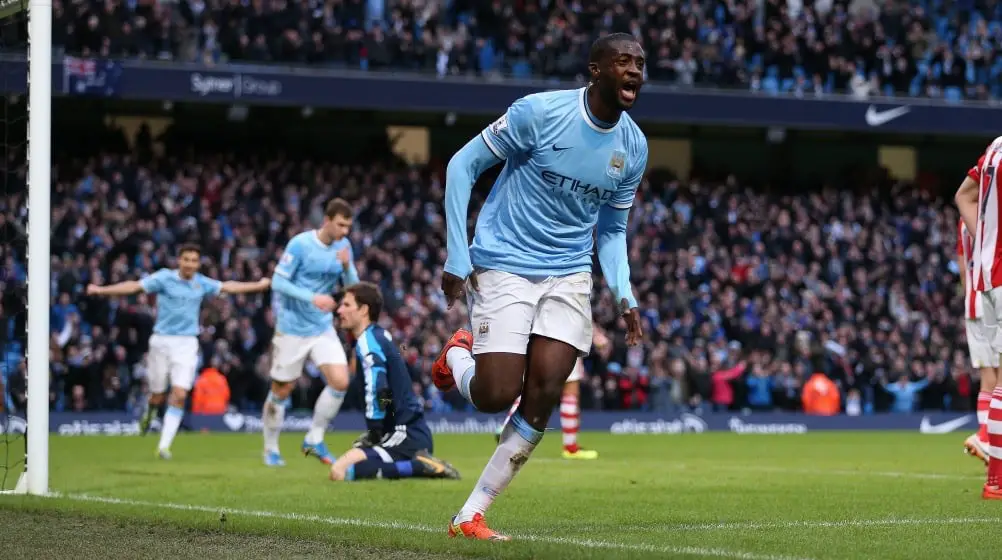

Several notable managers have guided Manchester City to success.
Pep Guardiola, one of the most successful managers in the club’s history, won eleven trophies in six years from 2016 to 2022. Other famous managers include Roberto Mancini, Joe Mercer, Wilf Wild, and Tom Johnson.
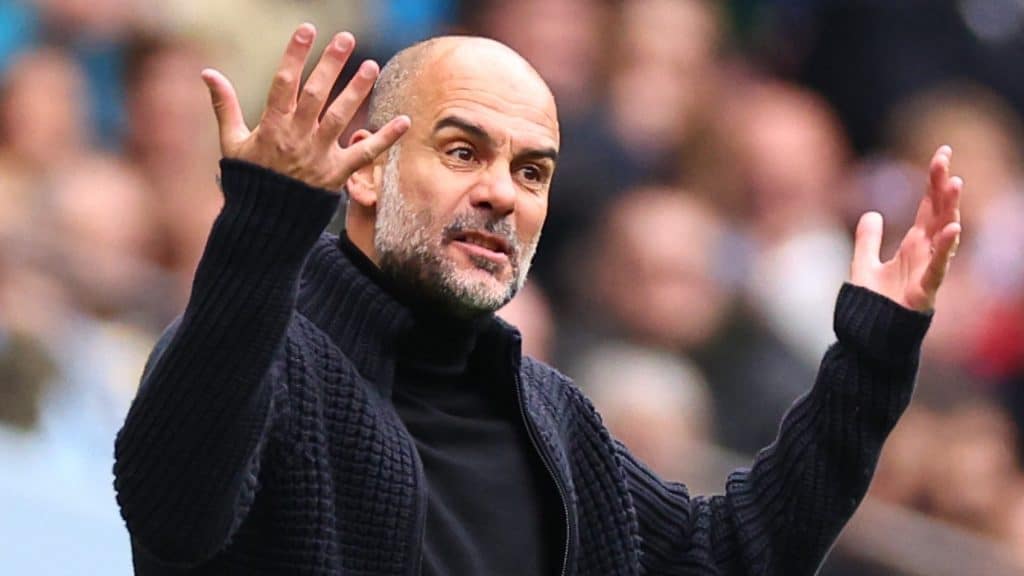
Etihad Stadium Redevelopment Plans
In November 2018, Manchester City consulted with season ticket holders regarding potential expansion plans for the Etihad Stadium.
Various configurations were proposed, including a larger two-tier North Stand without executive boxes or corporate hospitality lounges and areas convertible to safe standing.
Another proposal involved reconfiguring the full length of the second tiers in the East and West stands as premium seating associated with new hospitality bar areas.
These plans aimed to increase the stadium’s total seating capacity to approximately 63,000, making it the nation’s third-largest capacity club ground.
Eventually, a £300 million redevelopment programme was approved, focusing on the existing North Stand.
The plan includes constructing a new hotel, a covered fan park for 6,000 people, and increasing the stadium’s capacity to 62,000. Construction is expected to commence in 2023 and be completed by the end of 2026.
Grandstands at Etihad Stadium
There are 4 grandstands at Manchester City’s Etihad Stadium.
- Family Stand (North Stand)
- South Stand
- East Stand (The Kippax Stand)
- Colin Bell Stand (West Stand)
Family Stand / North Stand
The North Stand at the Etihad Stadium has a two-tiered design with a row of executive boxes running across the back of the stand just below the roof.
While not as expansive as the South Stand, it still presents a range of viewing options for football fans.
Lower Tier
From the lower tier, spectators can appreciate the close proximity to the pitch, which allows for a more intimate connection to the game.
Fans can witness the players’ intricate footwork, tactical movements, and feel the intensity of the match.
Upper Tier
The upper tier, on the other hand, offers a more comprehensive view of the entire pitch. Though the height may make the players appear smaller, it provides a better perspective of the team’s strategies and formations, which can be quite insightful for those interested in the tactical side of football.
As for the executive boxes, they provide an exclusive and comfortable viewing experience, with luxurious amenities and a private atmosphere. However, some may argue that the boxes’ seclusion could potentially detract from the authentic stadium atmosphere and camaraderie shared among fellow supporters.
The North Stand at the Etihad Stadium caters to a variety of preferences, with each tier offering its unique vantage points and experiences. While it may not be as grand as other stands in the stadium, it remains an essential part of the overall Etihad experience.
South Stand
The South Stand at the Etihad Stadium is an impressive structure, boasting a recently added third tier that increased the capacity by 6,250 seats.
This expansion has made it one of the more striking features of the stadium.
Lower stand
The lower tier of the South Stand offers a close-up view of the action, allowing spectators to immerse themselves in the game and experience the excitement first-hand.
Fans can appreciate the players’ skills, hear the on-field communication, and even feel the energy from the pitch.
Middle Tier
Moving up to the middle tier, the South Stand provides a comfortable balance between proximity and overview. Supporters can still feel connected to the action while gaining a more comprehensive understanding of the game’s dynamics.
This vantage point is ideal for those who wish to analyse team formations and appreciate the tactical aspects of football.
Upper Tier
The upper tier, being the highest in the South Stand, offers a bird’s eye view of the entire playing field.
Although the players might appear smaller from this height, the elevated perspective allows for a clear understanding of the unfolding action, making it easier to spot patterns and movements that might be obscured from a lower angle.
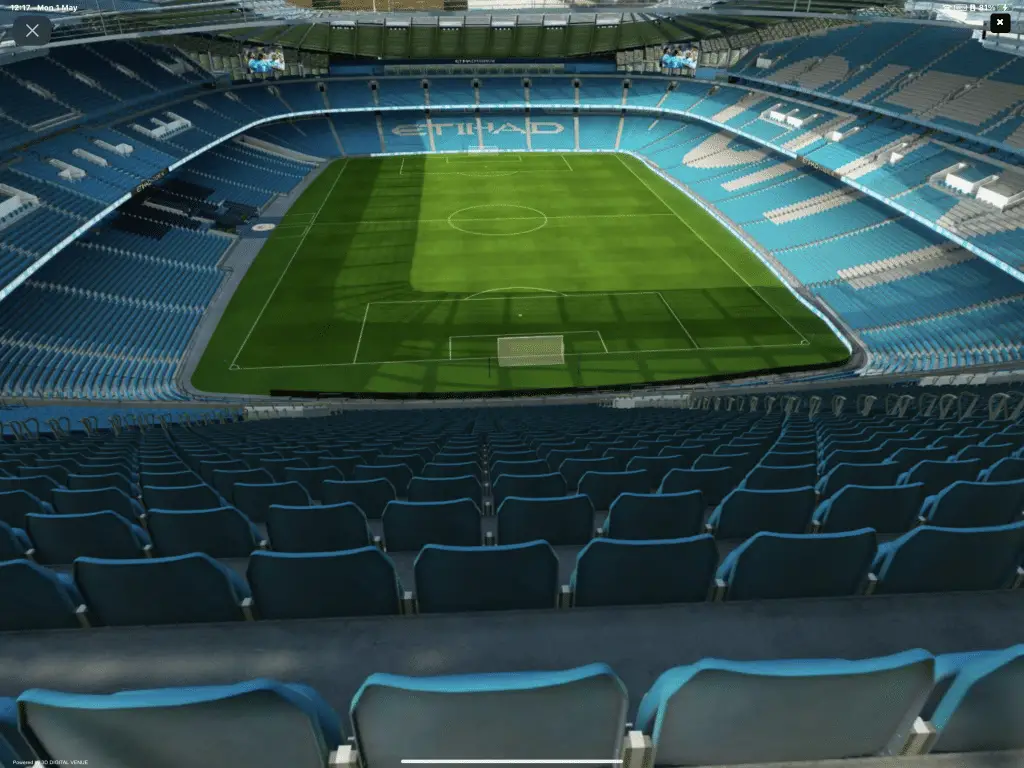
The South Stand, with its multiple tiers and diverse viewing options, caters to a wide range of preferences. Each level provides a distinct experience, allowing spectators to choose the angle that best suits their taste and enhances their overall enjoyment of the game at the Etihad Stadium.
East Stand
The East Stand at the Etihad Stadium caters to various fans, including away supporters and our club’s disabled spectators.
This two-tiered stand, with a capacity of around 13,300, features a visually appealing tinted glass façade, which houses the club’s administrative centre. In this review, I’ll share both the positive and negative aspects of the East Stand from a fan’s perspective.
Lower Tier
The lower tier of the East Stand offers excellent seating options and views for enjoying a Manchester City match. Being closer to the action, we fans can truly feel the energy and intensity of the game. Seats near the halfway line provide a central perspective, while those closer to the corners offer prime viewing of goal action.
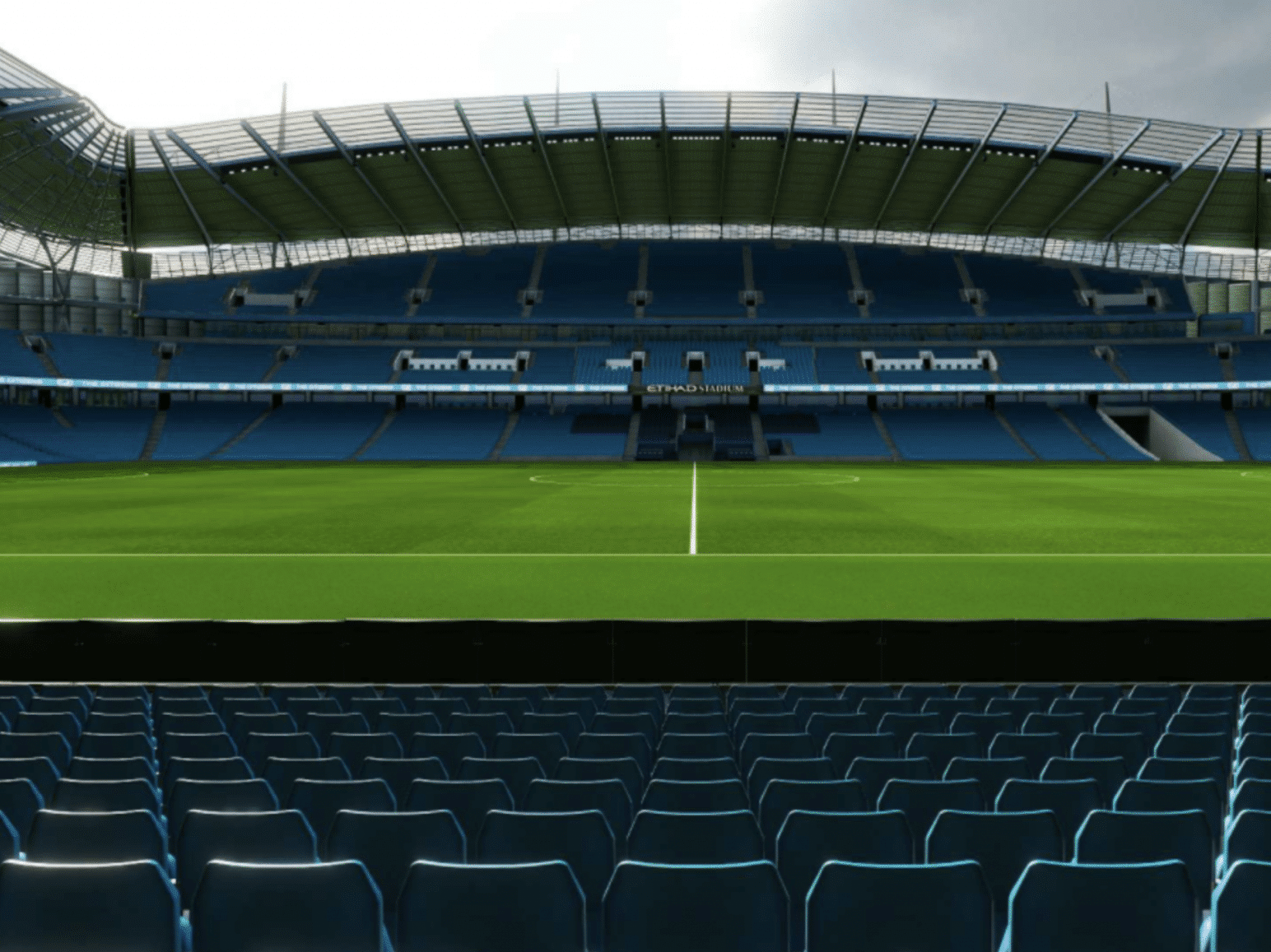
Additionally, the club ensures that disabled supporters have comfortable and accessible seating in this area.
One potential downside is that the proximity to the pitch may make it difficult for some spectators to see the entire field. However, the immersive atmosphere more than makes up for this minor drawback.
Upper Tier
The upper tier of the East Stand, despite being higher up, still provides fans with a pleasant view of the pitch. The unobstructed and elevated perspective enables spectators to appreciate the entire field, making for an enjoyable experience.
For those who prefer a more panoramic view of the game, the upper tier is an ideal choice.
One possible negative aspect of the upper tier is the feeling of being slightly detached from the action due to its height, but the comprehensive view of the pitch offers a different perspective that many fans appreciate.
VIP Facilities
The VIP facilities at the Etihad Stadium are located throughout the stadium, including the East Stand. These hospitality lounges offer a spacious and private environment with top-quality hospitality and excellent seating options, ensuring a memorable matchday experience for fellow fans who want a more luxurious experience.
On the other hand, the VIP experience may not be the most budget-friendly option for some fans.
However, those who choose to indulge in this premium offering will undoubtedly find it a worthwhile investment for a special occasion or an elevated matchday experience.
Colin Bell Stand / West Stand
The Colin Bell Stand, also known as the West Stand, is named in honour of the former Manchester City player, Colin Bell.
The stand features both upper and lower tiers and is similar in design to the East Stand. This stand offers various seating options and facilities for fans attending matches at the Etihad Stadium.
Lower Tier
The lower tier of the Colin Bell Stand provides a close-up view of the action, with seats near the halfway line or corners offering optimal perspectives. As fans are closer to the pitch, the atmosphere in the lower tier can be lively and engaging, with noise levels reflecting the excitement of the match.
A unique feature of this stand is its entrance, which allows fans to greet Manchester City players as they walk toward the tunnel and onto the pitch.
One potential downside of the lower tier is that the proximity to the field and the shallower seating arrangement may make it difficult for some fans, especially children, to see the entire pitch over the heads of those seated in front of them.
Upper Tier
In the upper tier of the Colin Bell Stand, the seating arrangement is steeper than in the lower tier. This design allows for better visibility over other spectators’ heads and provides a more comprehensive view of the pitch.
The upper tier can be a better option for families with children, as the steeper seating makes it easier for them to see the game.
Although the height of the upper tier may make fans feel somewhat detached from the action, many appreciate the ability to see the entire field from this vantage point. Noise levels in the upper tier can vary, but generally, they are less intense than in the lower tier.
Facilities
The Colin Bell Stand houses various facilities to enhance the matchday experience.
These include press rooms, ground staff storage, a kitchen capable of serving up to 6,000 meals on matchdays, and even a prison cell. These features contribute to the overall functionality and atmosphere of the stand.
Overall, the Colin Bell Stand offers an enjoyable experience for fans attending Manchester City matches, with a range of seating options and facilities.
The stand’s connection to club legend Colin Bell adds to its significance within the Etihad Stadium. Depending on personal preferences and needs, fans can choose between the lower tier, upper tier, or the family stand for a more suitable matchday experience.
Where do away fans sit at Etihad Stadium?
Away fans visiting the Etihad Stadium are seated on one side of the South Stand, with accommodations spread across the upper, middle, and lower tiers.
Up to 3,000 fans can be accommodated for regular matches and 4,500 for cup games. The view of the action from these seats is impressive, and the atmosphere within the stadium can be quite lively at times.
The stadium offers good facilities for away fans, including spacious concourses and large plasma flat television screens showing the game. Food options include hot dogs (£4.50) and a range of pies such as Peppered Steak, Chicken Balti, Potato and Meat, and Cheese & Onion (all £4 each).
It is worth noting that before getting to the turnstiles, fans have to pass through a security cordon, where tickets are checked, pat-down searches are carried out, and the contents of bags are inspected.
How to Get to the Etihad Stadium
There are various ways to get to the Etihad Stadium, with driving being one of the most popular methods. However, it’s important to note that parking is limited, so other modes of transportation might be better options.
Driving to the Etihad Stadium
The stadium is located in the North East of Manchester and is accessible from various main roads.
From the South M6:
Leave the M6 at Junction 19 and follow the A556 towards Stockport. Then, join the M56 going towards Stockport, continue onto the M60 passing Stockport and heading on towards Ashton Under Lyne. Leave the M60 at Junction 23 and take the A635 towards Manchester. Branch off onto the A662 (Ashton New Road) towards Droylsden and Manchester. Stay on the A662 for around three miles, and you will reach the stadium on your right.
From the M62:
Leave the M62 at Junction 18 and join the M60 Ashton Under Lyne. Leave the M60 at Junction 23 and take the A635 towards Manchester. Branch off onto the A662 (Ashton New Road) towards Droylsden/Manchester. Stay on the A662 for around three miles, and you will reach the stadium on your right.
An alternative route is to leave the M60 at Junction 24 and take the A57 (Hyde Road) towards Manchester. Turn right onto the A6010 (Pottery Lane). There are quite a number of unofficial car parks on both sides of Pottery Lane, costing around £5 per car. Pottery Lane becomes the Alan Turing Way and goes right past the stadium on your left.
Car Parking
There is limited parking available at the stadium itself, costing £10 per car and £20 per minibus, while motorcycles are free.
The East Car Park is nearest to the away entrance. Be aware that there is a residents-only parking scheme in place in the streets near the ground, extending about a mile out from the stadium. So, if you want to park on the street, it means parking further away and walking to the stadium. Some unofficial car parks have sprung up, mostly charging around £5 per car.
It’s worth noting that exiting the official car park after the game can take up to an hour due to congestion. Meanwhile, the unofficial car parks, all but 400 yards away, tend to clear more quickly.
An alternative parking option is St Brigid’s Church on Grey Mare Lane (off the Ashton New Road behind the South Stand where the away fans are housed), costing £6. It is very close to the stadium, but being so near, it takes a while to get back out onto the main road after the match.
Rent a parking space via JustPark
I recommend booking a private parking space for the most convenient driving experience. You can do this with the JustPark app which works a lot like AirBnB. These are essentially residential parking spaces that you’re renting from the owner.
There’s a limited supply of parking spaces so you’ll need to book now to avoid missing out.
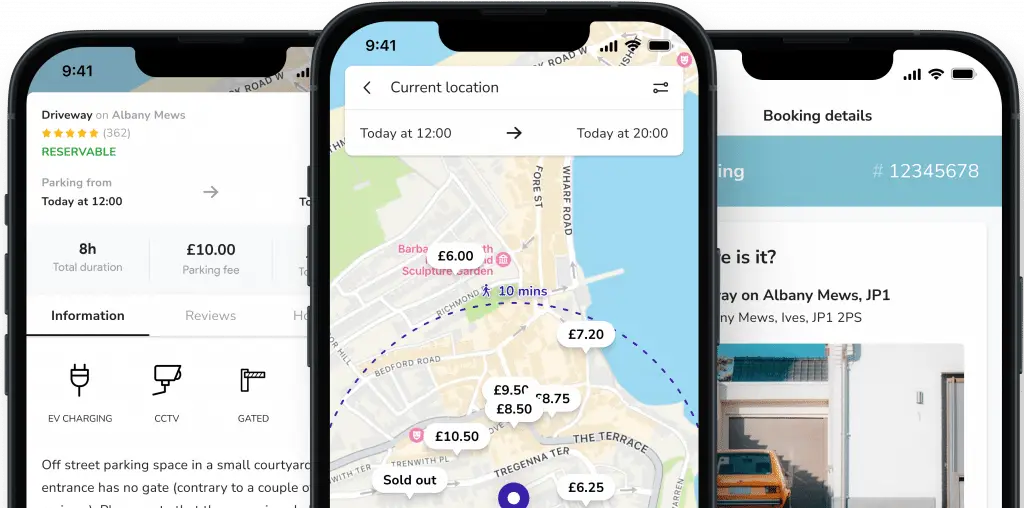
The stadium is part of Sportcity, so car users should follow the brown Sportcity signs until near the stadium. The post code for SAT NAV is M11 3FF.
By Coach
If you prefer a hassle-free and comfortable journey to the Etihad Stadium, consider using the coach service provided by Zeelo.
This family-friendly service offers direct transportation to the stadium with guaranteed seating, allowing fans to enjoy the atmosphere together. Special rates are available for seniors and children, with prices starting from as little as £9 for a return journey.
By Train and Metrolink
The Etihad Stadium has its own Metrolink stop on the East Manchester line, called Etihad Campus, which is just a five-minute walk from the away end. Trams to the stadium can be caught from Victoria or Piccadilly railway stations, or from Market Street or Piccadilly Gardens in the city centre.
Take a tram towards Droylsden, stopping at Etihad Campus or Velopark.
Trams run frequently on matchdays (every six minutes), and the journey time from Piccadilly Station to Etihad Campus is just eight minutes. A return ticket for this journey costs £3 for adults and £1.40 for children.
Alternatively, you can park near the motorways and take a tram into the city, as the Metrolink also has lines from Oldham, Eccles, and Altrincham, with parking facilities available at various locations near the stations.
The closest railway station to the stadium is Ashburys, which is a short five-minute train ride from Manchester Piccadilly Station. From Ashburys, it’s a 15-minute walk to the stadium. If you have time, you can also walk from Piccadilly Station to the stadium, which takes around 20-25 minutes.
By Taxi or Bus
From Piccadilly Station, you can take a taxi to the stadium (around £8), or catch a bus from Piccadilly Gardens. Normal service buses (216 and 231) leave from the north side of the Gardens, while special matchday buses are available just across the road, costing £1.90 each way.
Service 53 runs around the city’s ring road and passes the stadium. On the return journey, the special buses leave from Ashton New Road, near the away end.
Remember to book train tickets in advance to save money on your journey. Find train times, prices, and book tickets with Trainline to see how much you can save on the price of your tickets.
Nearest Airports to Manchester City Matches
Manchester Airport
Manchester Airport, located south of the city, is approximately ten miles away from the Etihad Stadium. If you’re flying into Manchester, there are several options for getting to the stadium. A taxi from the airport to the stadium will cost around £35.
Alternatively, you can use the Metrolink tram system to travel from the airport to the city centre. From the airport, take a tram and change at Cornbrook station for a tram heading towards Ashton Under Lyne. The total journey time is approximately 90 minutes. To make your travel more cost-effective, consider purchasing a one-day off-peak adult travel card (available on weekends and after 9:30 am on weekdays), which costs £5 and provides unlimited tram journeys for the day.
Once you arrive in the city centre, you can follow the previously mentioned options for getting to the stadium by train, Metrolink, taxi, or bus. Choose the most convenient mode of transportation and enjoy your visit to the Etihad Stadium.
Other airports nearby
While Manchester Airport is the primary airport serving the city, there are a few other airports within reasonable distance.
Liverpool John Lennon Airport
Approximately 35 miles west of Manchester, this airport offers an alternative for travellers. From the airport, you can take a bus or taxi to Liverpool Lime Street Station and then catch a train to Manchester Piccadilly Station. From there, follow the directions mentioned earlier to reach the Etihad Stadium.
Leeds Bradford Airport
Located about 57 miles northeast of Manchester, it’s another option for visitors. You can take a taxi or bus from the airport to Leeds Railway Station, then catch a train to Manchester Piccadilly Station, and follow the instructions provided earlier for reaching the stadium.
East Midlands Airport
Around 70 miles southeast of Manchester, it provides additional options for travellers. From the airport, take a taxi or bus to East Midlands Parkway Railway Station, then take a train to Manchester Piccadilly Station, and follow the directions to the Etihad Stadium.
Please note that travel times and transportation options may vary depending on the airport, and it is always a good idea to check for the most up-to-date information before making any travel arrangements.
What to do before a Man City match?
Before the match, make sure to visit the dedicated fan zone, City Square, which opens two and a half hours before kick-off. Here, you can enjoy live entertainment hosted by City Square presenters. The fan zone features three large screens, a main stage, the Summerbee Bar, and the family-friendly Blue Moon Café.
The Summerbee Bar is an outdoor covered bar where fans can enjoy drinks, while the Blue Moon Café offers a covered spot to grab a bite to eat or a hot drink.
Each week, City Square showcases at least one live band or musical performance from up-and-coming artists. Past performances have included bands like The Blossoms and 1975. Additionally, live DJs set the mood with great music throughout the fan zone.

City Square also features entertainment by resident comedian and presenter, Capital FM’s DJ Wingman, who hosts competitions and interactive games for fans to win exclusive prizes.
Special guests, such as Tom Cruise, Liam Gallagher, Ricky Hatton, Andrew Flintoff, and Georgi Kinkladze, often join presenters Natalie Pike, Danny Jackson, and BBC Radio Manchester’s Mike Minay for a chat.
Don’t miss the Cityzens Hub, where you can take a picture with a real-life cutout of Pep Guardiola, Manchester City’s latest signing. The Match Day Live team, led by Cel Spelman, provides team news, insight, and analysis of the game with City legends and pundits.
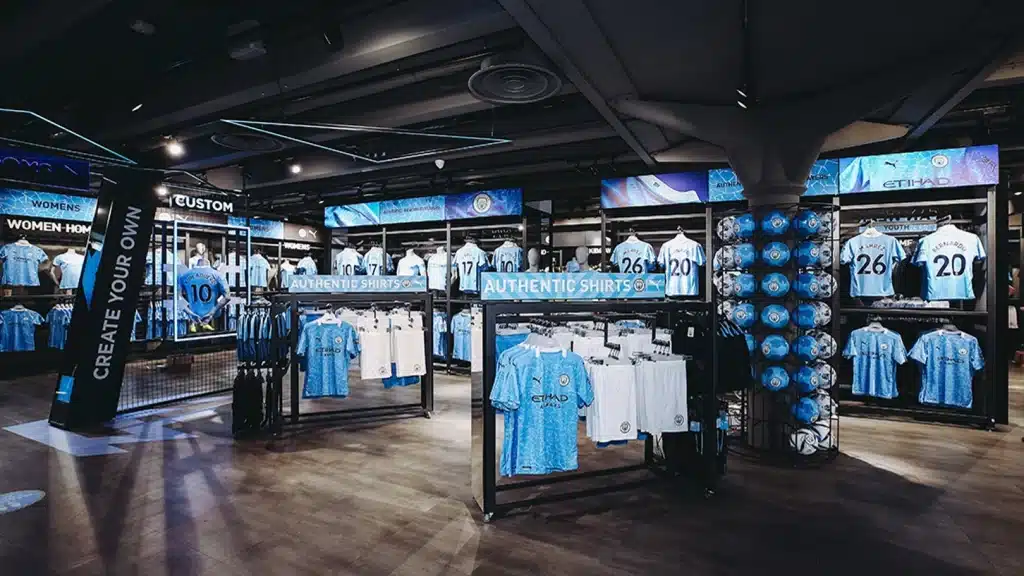
City Square closes 30 minutes before kick-off, allowing fans to enter the stadium and support the team. After the final whistle, head back to City Square for post-match analysis, food, and drinks.
Good advice for Manchester City Football Matches
Here’s some handy tips for any Man City match you go to. These will ensure you have a great time.
Arrive Early
Make sure to arrive at the stadium well before kick-off to fully experience City Square and to avoid any last-minute rush. This will give you ample time to find your seat, grab a bite to eat, and enjoy the pre-match atmosphere.
Use Public Transport
Parking around the Etihad Stadium can be limited, so consider using public transport options such as the Metrolink or bus services. This will save you time and effort in finding a parking spot and dealing with post-match traffic.

Dress Appropriately
Manchester’s weather can be unpredictable, so make sure to dress in layers and bring a waterproof jacket. You’ll be more comfortable during the match if you’re prepared for any sudden changes in weather.
Familiarise Yourself with the Stadium Layout
Before attending the match, take some time to study the Etihad Stadium’s layout and learn about the various entrances and facilities. This will help you navigate the stadium more efficiently and make the most of your visit.
Bring Cash
Although many vendors inside the stadium accept card payments, it’s a good idea to bring some cash for food, drinks, and souvenirs. Some smaller vendors or unofficial car parks may only accept cash, so having some on hand can save you time and inconvenience.
Be Mindful of Seating Options
If you’re attending the match with children or have specific seating requirements, consider the benefits of different seating areas. The upper tiers may provide better views for children, while the family stand offers a more family-friendly atmosphere.
Stay Safe and Respectful
Remember to be respectful to fellow fans and stadium staff, and follow all stadium rules and regulations. This will ensure a safe and enjoyable experience for everyone at the match.

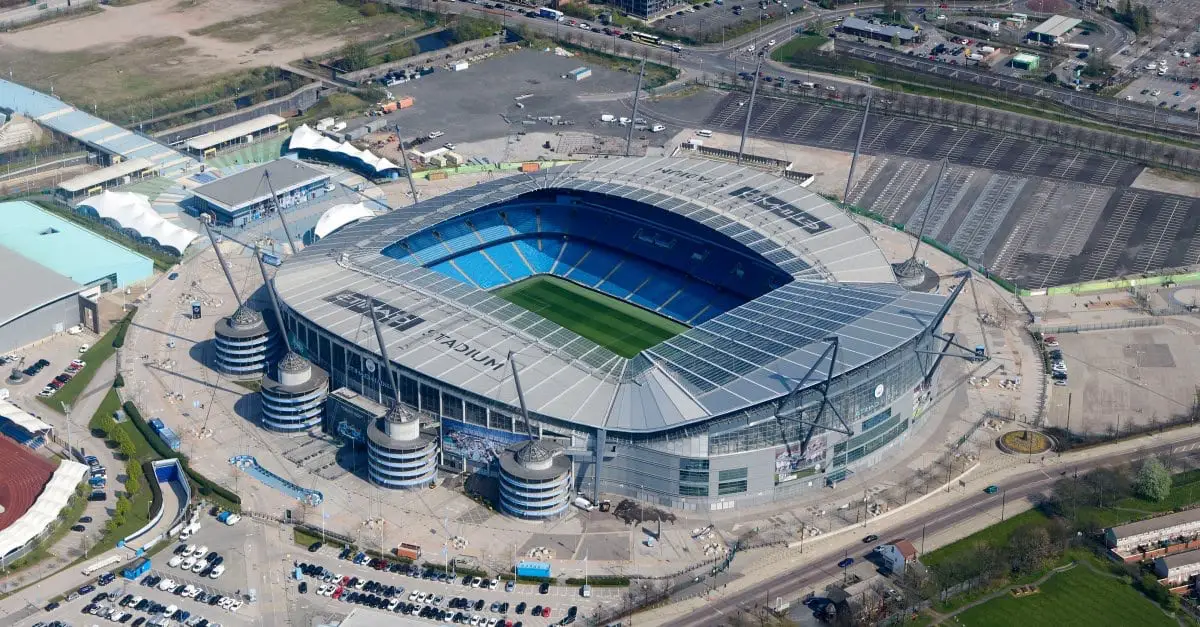

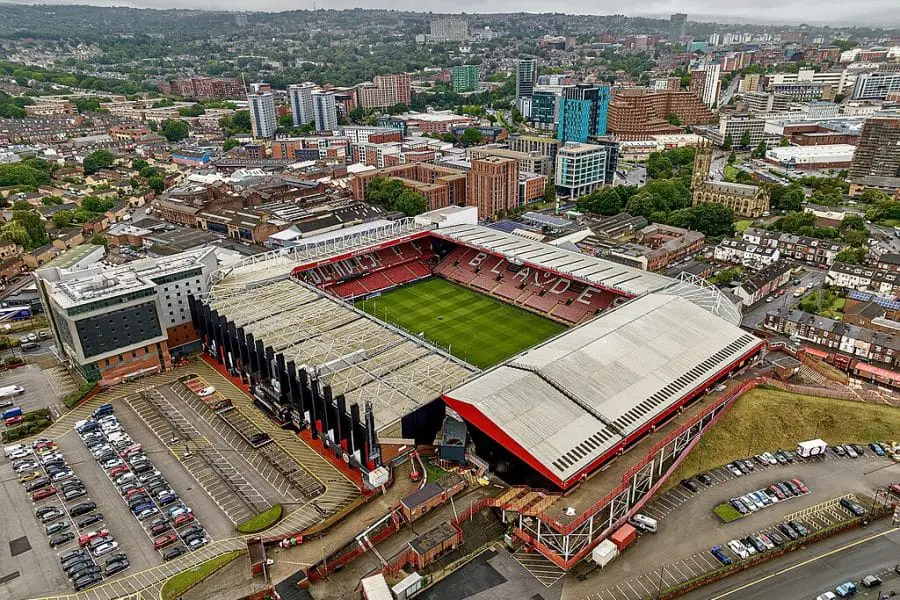
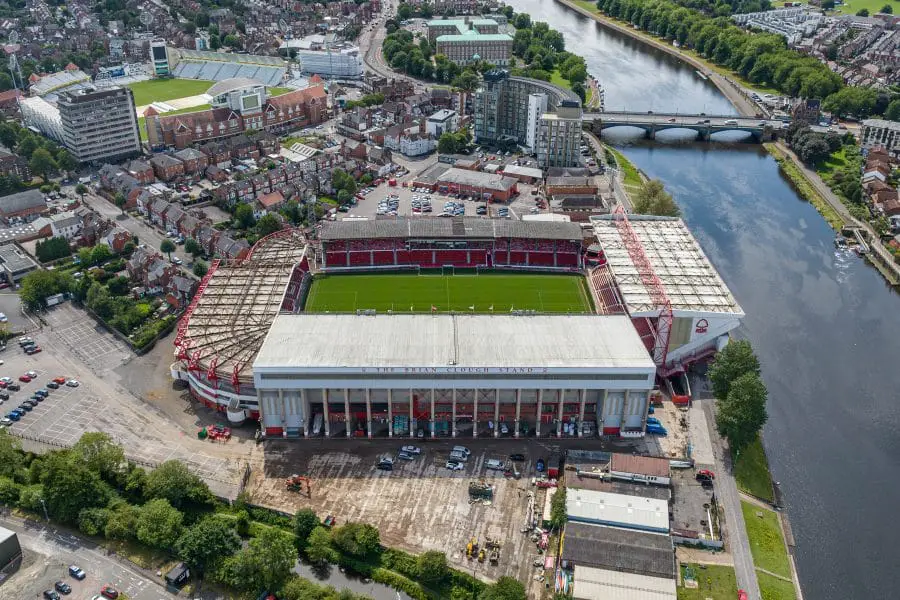
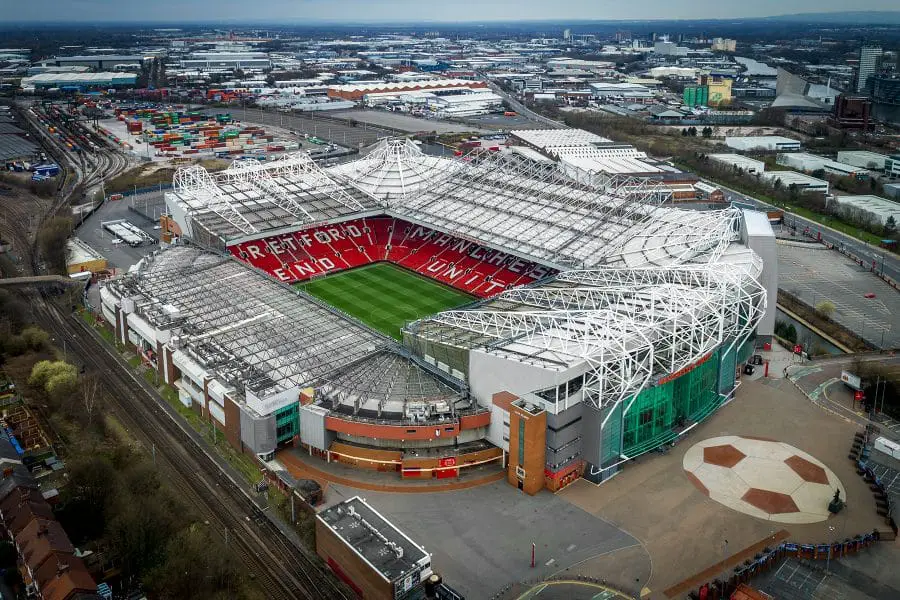
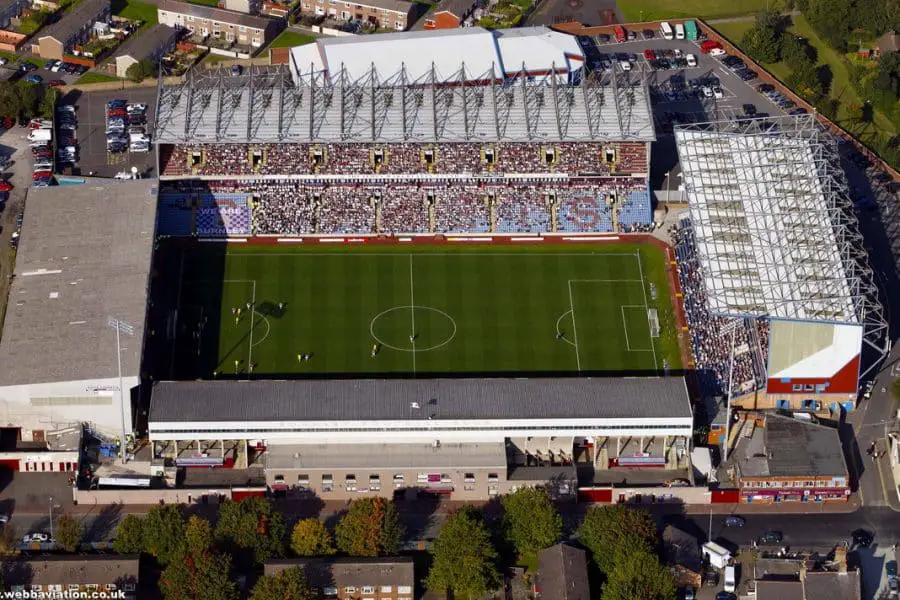
Leave a Comment